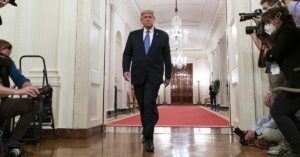U.S. sanctions target cocaine ring using narco submarines
In a bold move against international drug trafficking, the United States has imposed sanctions on six individuals from Colombia and Guyana accused of using submarines and aircraft to smuggle cocaine.
The sanctions are aimed at dismantling drug operations in South America and the Caribbean, with a specific focus on trafficking routes passing through Guyana.
The U.S. Department of the Treasury’s Office of Foreign Assets Control announced the sanctions targeting two Colombians and four Guyanese nationals. The Colombians involved are identified as Manuel Salazar Gutierrez and Yeison Andres Sanchez Vallejo, while the Guyanese nationals are Randolph Duncan, Himnauth Sawh, Mark Cromwell, and Paul Daby Jr.
Submarines And Aircraft In Drug Smuggling
The accused traffickers reportedly utilized unconventional means such as narco submarines and aircraft to ensure the safe passage of cocaine to destinations including the United States, Europe, and the Caribbean. Duncan and Daby Jr., suspected of operating major drug organizations in Guyana, are also accused of bribing local officials to facilitate their illicit activities. Meanwhile, Sawh is alleged to have cooperated with Venezuelan and Mexican traffickers navigating through Guyana.
Mark Cromwell, a former police officer, is wanted for charges related to abduction, adding to the complexity of the criminal network's workings. Salazar and Sanchez were responsible for managing smuggling operations that connected flights from Colombia to Guyana.
According to the U.S. Department of the Treasury, all property and interests held by these individuals within the United States are now blocked. This measure is part of ongoing efforts to curtail drug smuggling through the dense jungles of Guyana.
Record Smuggling Operations Through Guyana
The geographical position of Guyana makes it particularly susceptible to becoming a conduit for cocaine trafficking. U.S. authorities highlighted the nation’s vulnerability due to rampant corruption, with a 2025 State Department International Narcotics Control Strategy Report emphasizing this challenge.
A recent seizure in March 2025 brought attention to the operational capacities of these drug rings. A cargo vessel from Guyana was confiscated carrying 400 pounds of cocaine camouflaged with the Toyota logo, a signature of the powerful Sinaloa Cartel.
The previous year, authorities intercepted a narco submarine off Guyana’s coast, uncovering a massive haul of 5,200 pounds of cocaine. These events underline the significant threat posed by these drug trafficking networks.
U.S. Treasury's Continued Commitment
The U.S. Department of the Treasury reiterated its dedication to exposing and dismantling these criminal networks. "Treasury will continue to expose the criminal networks that allow for drugs to be trafficked into the United States," stated Deputy Secretary Michael Faulkender. The administration has been highlighting achievements in border security, with Faulkender noting, "Under President [Donald] Trump, this administration has achieved the most secure border in modern history."
The collaboration between the United States and Guyana is noted as an important partnership in combating the narcotics trade. However, the inherent corruption present in Guyanese institutions presents a daunting obstacle in these efforts.
The Treasury's commitment extends to working alongside U.S. law enforcement agencies and the Government of Guyana. The goal is to develop strategies to stop these cartels from operating unchallenged in the region.
Partnership and Challenges Ahead
"Guyana is a close partner of the United States in combating narcotics trafficking," stated the U.S. Department of the Treasury, reinforcing the cooperative relationship.
Nonetheless, as revealed in the State Department report, corruption within Guyana remains a significant roadblock, impeding effective action against drug trafficking.
The sanctions are a crucial step, but overcoming systemic corruption and increasing operational capabilities are necessary for lasting success. Continued cooperation and innovative solutions will be central in the fight against these drug networks.




